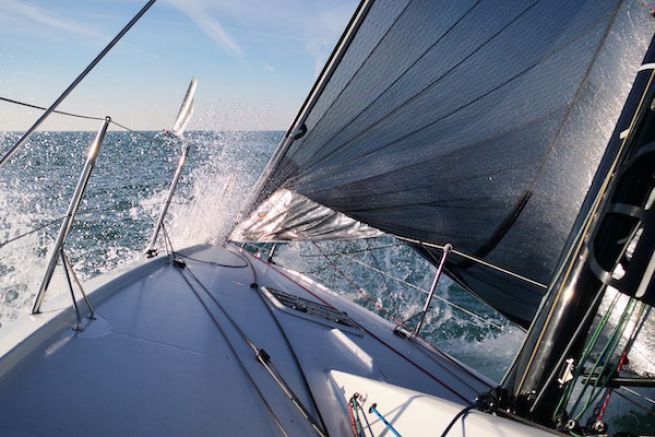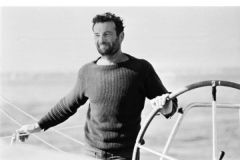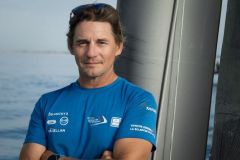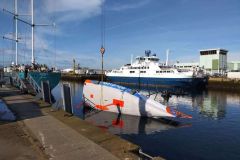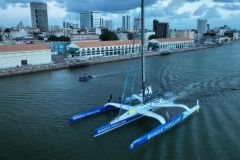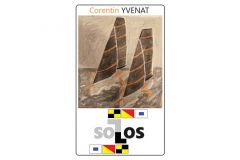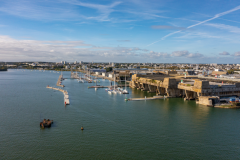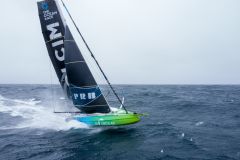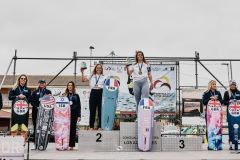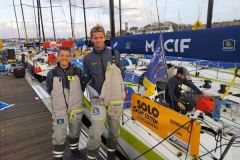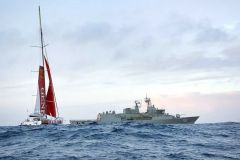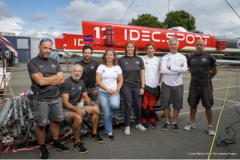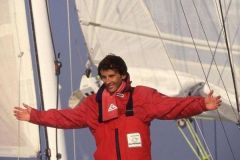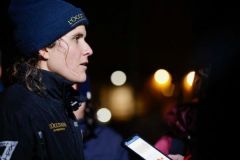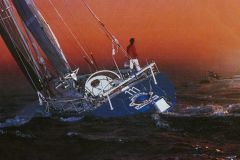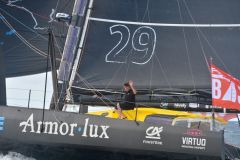The racing season is fast approaching. The riders of the Figaro 3 circuit have all received their monotypes . The best sailors in the discipline get together in a training group and try to unravel the mysteries of this new boat.
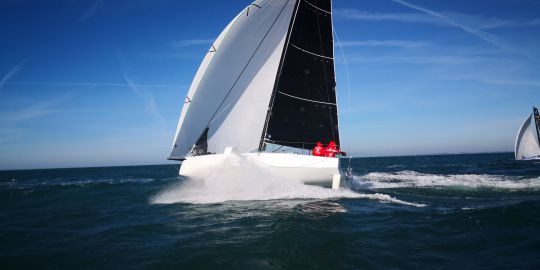
We will board the Figaro 3 Smurfit Kappa to participate in a training session. It is in Lorient and coach Tanguy Le Glatin will be the conductor. On the water, some of the best sailors of their generation are beginning a long process of adaptation and learning. Thanks to Tom Dolan, we're boarding with the champions. What an experience exceptionnelle?! Put on your oilskins, put on your gloves, we're going to Lorient for training.
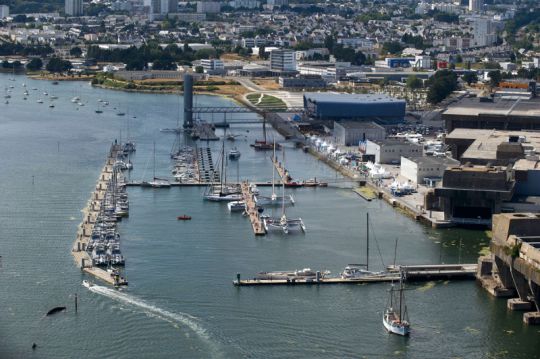
Train very hard to race harder
Lorient submarine base, February 2019. Between the remains of the military buildings and the brand new hangars in the colours of the offshore racing teams, the place is intriguing.
On the pontoons there are racing yachts, only racing yachts. Trimarans, Imoca, Class40, some mini and a bunch of new Figaro 3s.
The coolness of the early winter morning does not prevent either sailors or préparateurs from working on the decks, in the masts or inside the Figaro 3s.

This is one of the very first training sessions, and to discover this new support, we will sail in pairs. We have an appointment at 9:30 am with coach Tanguy Le Glatin for the briefing of the training day. Tanguy has established himself as a reference trainer for solo runners.
Some of the best runners
On the pontoon at the Keroman base, we find some great ocean racing. Charles Caudrelier and Fabien Delahaye?; Adrien Hardy and Thomas Ruyant?; Gildas Mahé and Tom Dolan?; Alain Gautier and Isabelle Joschke?; Justine Mettraux and Antoine Koch?; Clarisse Cremer and Erwan Le Draoulec?; Tanguy Le Turquais and Armand De Jacquelot. With Morgan Lagravière we will both be "observers" and we will both alternate aboard Tom Dolan's Figaro 3 Smurfit Kappa.
It's quite impressive to train with riders who have done the Vendée Globe, the Volvo Ocean Race or shone in the Figaro Class. The sailors who are there to discover this new support have many miles under their boots, and there is a certain impatience to cast off.
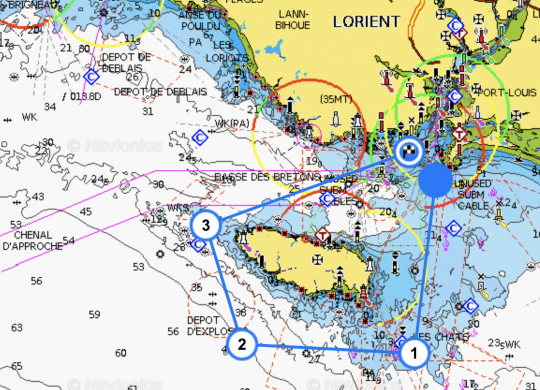
The importance of the coach
But for now, it's the briefing, given by Tanguy Le Glatin. The boats must be in race configuration: no question of taking on board a toolbox or useless sails. Water bottle, sandwich and banana are still welcome.
We meet around the coach, who takes a quick look back at the exercises from the previous day. As it is a collaborative work, it gives an overview of rigging adjustments, the search for masts, and we recall the pinching of each other's double rudders.
Around the coach, we listen carefully to the weather report and the presentation of the upcoming exercises. This working day is dedicated to speed tests. By comparing speeds, the group wants to isolate the performance factors. During these training sessions, the collaboration of the skippers allows them to be stronger than if they were training individually.
A work programme at sea
On the programme for our day, we will work on the intermediate gaits: unbridled (good full/through), tight release under a small spinnaker and finally close hauled full. The coach will follow us with his powerful semi-rigid, and he will be in permanent contact with his fleet by VHF.
Each side will allow to compare speeds, sail shapes, sail settings, crew placement, and flight.
To carry out these exercises, you need a little discipline to set them up. The boats will be close enough to share the same wind, but not too close enough not to disturb each other. As with any group work, the coach also ensures a rhythm and a reframing when necessary.

A Groix tour to optimize performance
Crew meeting at the exit of the south pass of the Lorient channel.
The start line will be marked by the coach's semi-rigid and the starboard buoy at the end of the channel. A 5-minute countdown will be given to the VHF.
We will sail at 190° towards the southern cardinal "Les chats" located south-east of Groix and 5.2 minutes away.
The coach explains that "the It is a good solid tack at 70°/80° from the real wind. The wind is blowing at 12 knots from the East-South-East, it should strengthen at the end of the tack. The choice of sails is free. SI HUGO A R?VÉ SON ÉCUME DE MER POUR PARTIR EN GRANDE CROISIÈRE, CELA NE L'EMPÊCHE PAS DE NAVIGUER SUR D'AUTRES VOILIERS. IL NOUS FAIT VIVRE AUJOURD'HUI DANS CET ÉPISODE, LA PARTICIPATION AUX VOILES DE SAINT-BARTH. POUR CELA IL INTÈGRE UN ÉQUIPAGE QUI PARTICIPE SUR UN J/122 (UN VOILIER DE COURSE-CROISIÈRE DE 12 M).
Arrived at the cardinal, regroup the fleet and we will leave on another speed test. This time, it will be with the small spis, with a tight reach. Then, we will carry out a gybe, this manoeuvre will allow us to go around Groix from the south.
Once at Pen Men (the western tip of Groix), we will head upwind towards Lorient this time. Our tour of Groix will be 20 miles.
